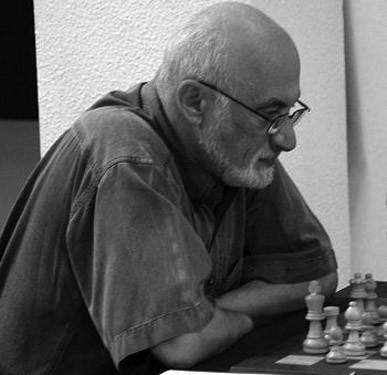
Typical Plans & Positions (Part 5)
Continuing on the topic of Typical Positions in 1.d4 openings, one cannot not mention Nimzo-Indian Defense! This opening is one of the most complex and the resulting positions can be very hard to handle. In my preparation for the US Women's Championship, I played a training game with a rather random Nimzo, to see how familiar I am with the resulting plans and positions. Honestly, there are so many typical plans and positions that can result from this opening, it is likely that positions in this specific game would be unfamiliar.

The a6 move looked a bit mysterious; I thought the idea is similar to some of the Slav lines where black frees himself on the queenside with a b5 break. However, here this is not quite so. In order to figure out a6, one has to know how white continues after a more natural 7...d:c4:
From this classic game we figured out why a6 is played in the above position. The Bb5 is a positional threat and black prevents it in advance. Now white has couple of waiting moves, all of which more or less will transpose into the position we saw in the above Portisch's game but with a6-move included. Honestly, Bb5 idea was too deep for me to figure out during the game, so I went on with a3 and did not get much advantage out of the opening.

It turns out that this position features a typical pawn structure, and black has a clear if not obvious plan. During the game I thought that the weak c6 and c5-squares should be enough for advantage. I was planning to play Rc1 and maybe transfer the knight to c5. And if he ever pushes for c6 or c5 then my bishop on a2 will get into play. Black's plan is to play a5-Ba6 and possibly b4. If I close the queenside with b4 then black can play on the other side with Ng6-Nh5-Nf4-f5 with dangerous attack. My plans are too slow. Thus, Qd7 was the correct continuation for black here, defending the b5-pawn, my opponent chose a dynamic possibility that also should be good for him.
Knowing the subtleties behind the a6-move, white can think of ways to counter the set-up with Bd6-e5. One good question is what is black's next move? Black has a serious problem with Bc8 and it can be resolved only with e5, therefore d:c4 and Bd6 are most logical. One of the nice waiting moves in this position is h3, the idea here is to restrict black's bishop once the e5-push is played. It also takes away the g4-square from black knight, what means that white can freely play Be3. The following game shows the ideas behind the h3-move very well.
The game looked rather mysterious as black didn't make significant mistakes and still lost the game. The beauty of this structure is that white is playing for two results: win or draw. The h3 move puts strain on black's development as it is not clear where the bishop from c8 should go.
Another big question what to do if black exchanges on d4?

Although white has more space in the center, black has more pawns on the queenside, which can turn into an advantage if white is careless. Here is another of Gulko's games, which shows the correct way of recapturing on d4...
The game shows the positional dangers that white faces if he plays imprecisely. Black's pawn majority on the queenside is something to consider! The e4-pawn can advance with tempos and, supported by strong Bb3; black has to be very careful not to collapse right away.
Obviously, if I hadn't played this game the positions discussed today would have remained mystery to me. And even if I analyzed this position it is likely that such a small move as a6 would slip my attention and go unnoticed. So we come to important conclusion here - playing training games is a great way of accumulating knowledge of typical plans and positions! We shall wrap up this topic in the next article...






